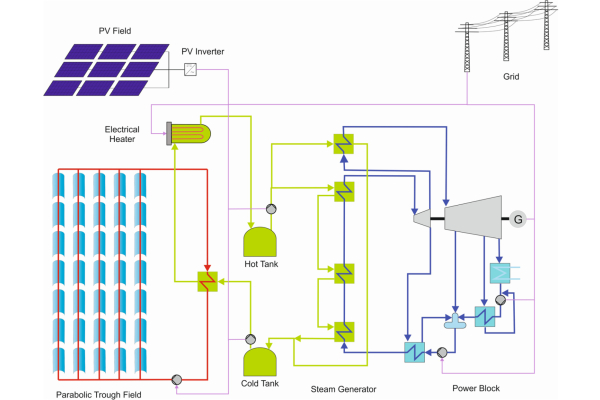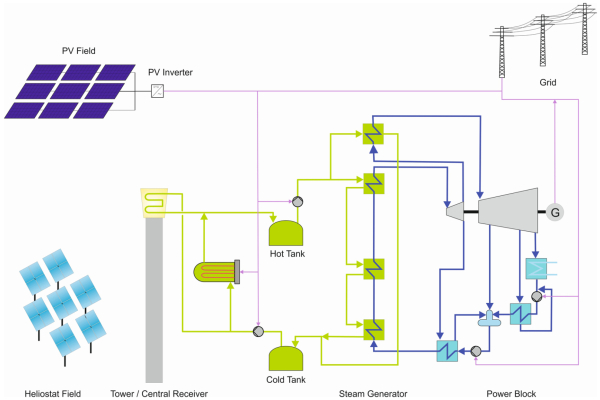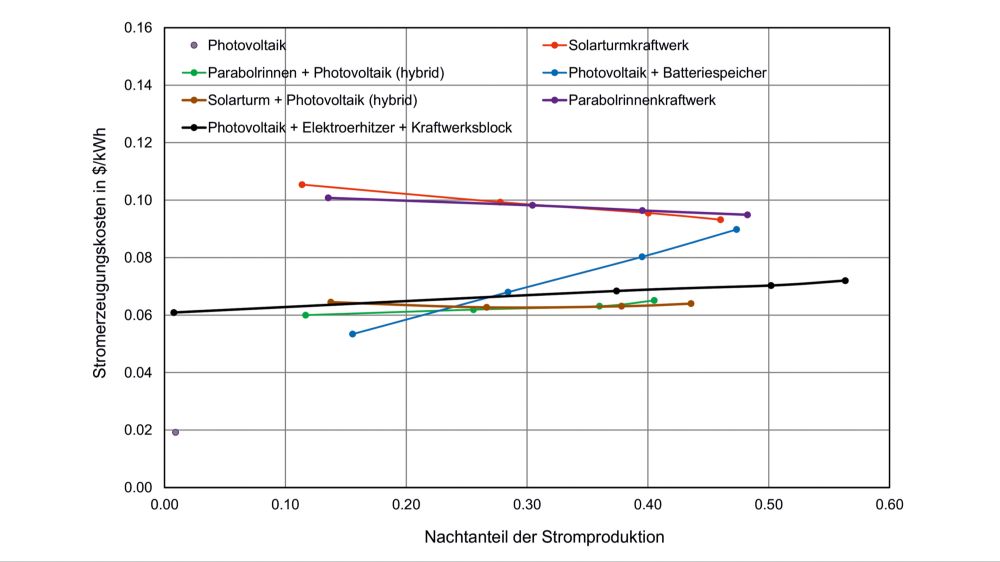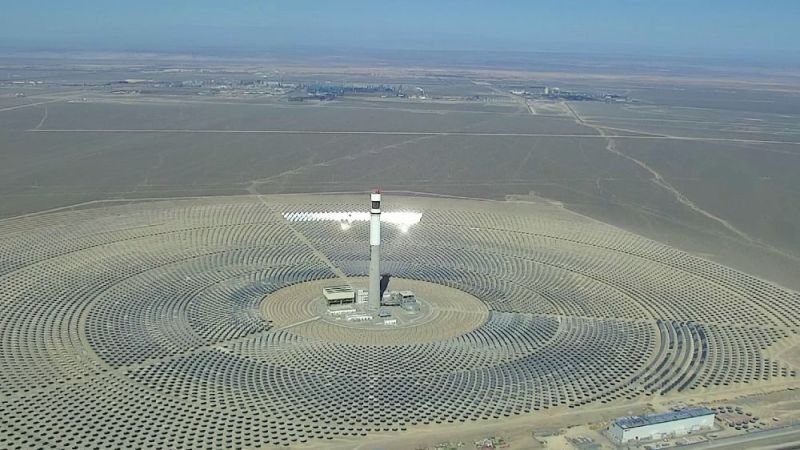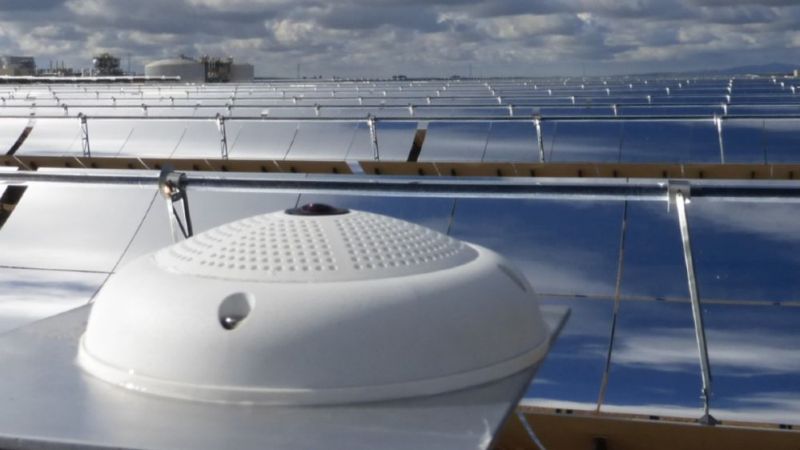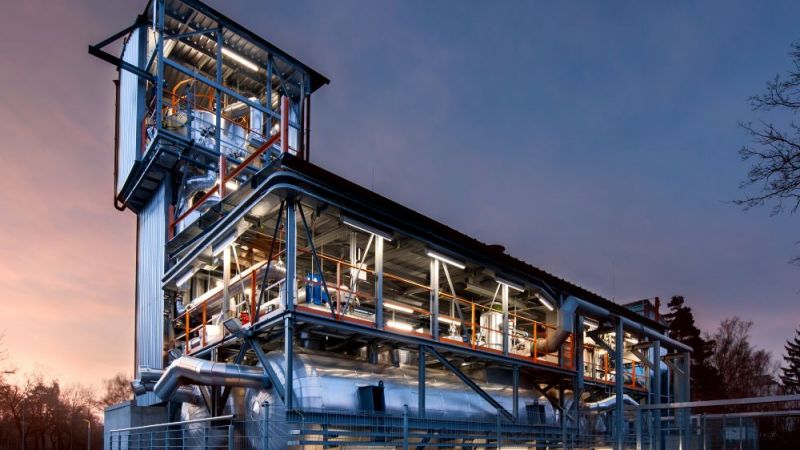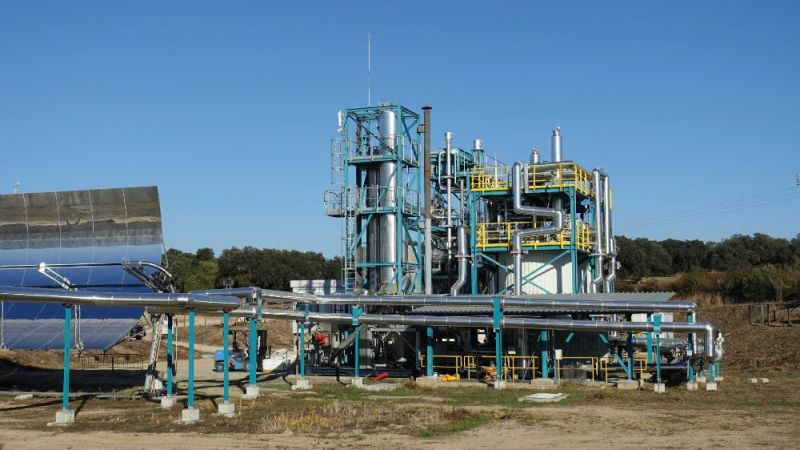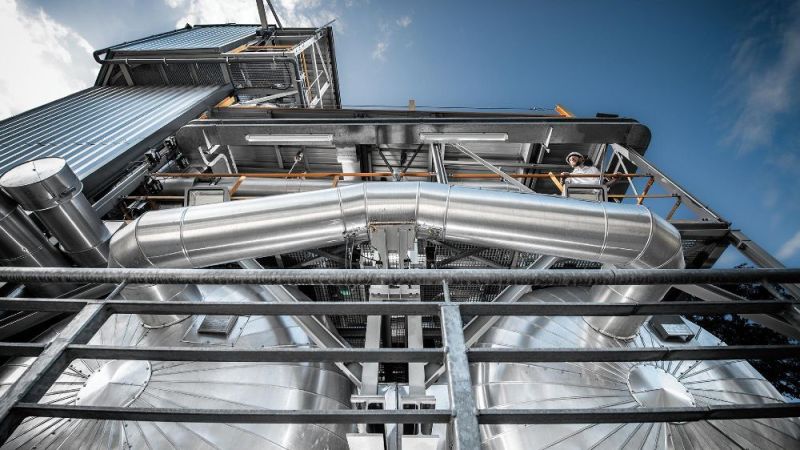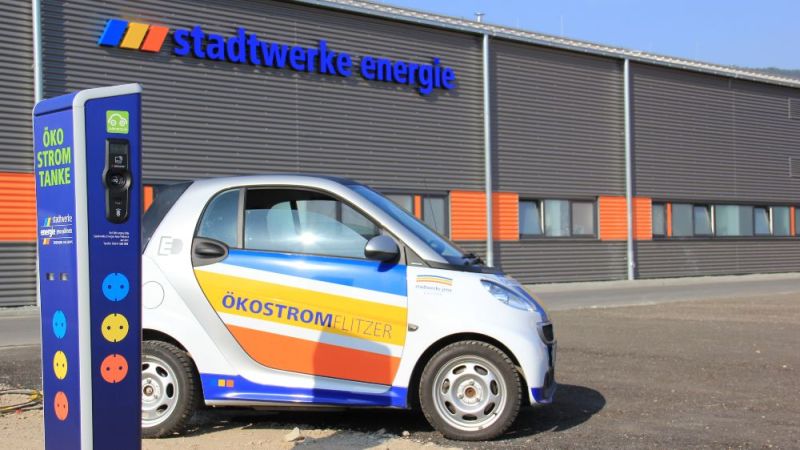Solar thermal power plants
Hybrid power plants generate cheap solar electricity - around the clock
By combining a photovoltaic system with a solar thermal power plant, these plants can generate low-cost electricity. The hybrid CSP-PV power plants produce renewable electrical energy both during the day and at night. Thermal storage tanks are essential, as they first provide intermediate storage for the excess heat produced during the day. During low irradiance or at night, this can then be used to produce power. But there is still no conclusive answer to the question of how the combination of photovoltaic system and solar thermal power plant can be optimally designed. Scientists in the IntegSolar research project have therefore used innovative simulation tools to investigate how the two technologies should ideally be coupled while at the same time ensuring supply.
Large photovoltaic systems are currently the most cost-effective technology for generating solar electricity during the day in sunny regions. The disadvantage is that the plants have to be shut down at very high irradiance levels because the supply exceeds the demand. Or expensive battery storage systems are needed if power is to be available in the evening hours or during the night.
This is where solar thermal power plants, so-called CSP power plants (Concentrated Solar Power), come into play, which can be operated economically especially in the Earth's sun belt (for example North Africa or southern Spain). This technology comes with proven and cost-effective thermal storage options to generate solar power even after sunset and when there is little sunlight. Storage is usually provided by large tanks filled with molten salt, in which temperatures of up to 565 degrees Celsius are maintained. These storage tanks are much more efficient and cost-effective than larger battery storage systems on photovoltaic systems.
Making optimal use of synergy effects
Given the different advantages of each technology, it is logical to combine them. For example, a CSP-PV hybrid plant is currently being planned in Morocco, near the city of Midelt. However, combining both technologies does not automatically result in lower electricity generation costs. If the respective advantages of the two technologies are to be used, the photovoltaic system and the solar thermal power plant must be optimally coupled as a hybrid power plant. This is where the IntegSolar project, short for "Integration of CSP and PV power plants - investigations on synergy effects through close coupling", comes in.
Software tools are ready
In order to be able to optimally combine hybrid CSP-PV plants, the teams of scientists from the German Aerospace Center (DLR) and Dornier Suntrace therefore investigated various concepts at seven sample locations by means of simulations as part of IntegSolar: Riyadh (Saudi Arabia), DeAar (South Africa), Plataforma Solar de Almeria (Spain), Diego de Almagro (Chile), Quarzazate (Morocco), Dagget (USA) and DunHuang (China).
For this purpose, they further developed two existing software tools. These tools will enable project teams to offer competent advisory services for planned CSP-PV hybrid plants in the future, for example for investors and banks. In the research project, the teams of scientists established the framework conditions for the projects. In the specific case, the special factors and prevailing conditions at the location must be taken into account in order to optimally utilise the synergy effects of a hybrid CSP-PV plant.
CSP power plant and photovoltaic system complement each other
The IntegSolar science teams concentrated their analyses on concepts in which the photovoltaic system and the CSP field are in close proximity to each other. They then share a common grid connection and use power-to-heat technologies, in this case an electric heater. The photovoltaic system then produces enough power during the day to cover its own needs (such as pumps) and feed it into the grid. In addition, an electric heater powered by photovoltaic electricity can be provided. This serves as a booster in parabolic trough plants to raise the temperature of the molten salt from 385 to 565 degrees Celsius. It can also make sense for solar tower power plants to use surplus, photovoltaically generated power to charge the salt storage tank via an electric heater. In the scenarios investigated, the power block of the CSP plant starts in the late afternoon hours and uses the thermal energy of the salt storage.
Finally, it remains to be clarified in which order the photovoltaically generated electricity should be used or fed into the grid so that the photovoltaic system and the CSP power plant complement each other optimally. Here the researchers adopted the following prioritisation: First, photovoltaic electricity is intended to cover the CSP plant's own needs and then, in the case of parabolic trough plants, to raise the temperature of the molten salt. The power generated over and above this is fed into the grid. In the case of solar tower power plants, own consumption also has the highest priority; only then is power fed into the grid. If power is available beyond this, which cannot be fed into the public grid, it is also possible to use the electric heater to charge the salt storage tanks. These operating modes place particular emphasis on a high proportion of electricity production after sunset.
Simulation results confirm hybrid plants
The IntegSolar analyses show: At suitable locations, CSP-PV hybrid power plants achieve lower electricity generation costs of around 6 euro cents per kilowatt-hour than pure CSP plants with around 10 euro cents. The costs are also lower in comparison with photovoltaic systems with integrated battery systems - provided that the share of power generated after sunset is to be above 25 per cent. This corresponds to a storage capacity of approximately 4 to 5 hours. The same applies to plants that only have a photovoltaic field, thermal storage tanks and electric heater for liquid salt and a power block (PV hybrid power plant without CSP field).
Location influences success
The IntegSolar analyses additionally show: The costs incurred depend on many factors. In addition to the desired location, the project-specific specifications under which the plant is to be operated also have a considerable influence here. Other cost factors are the demand profile as well as the feed-in tariff system prevailing at the location, the feed-in limitations at certain times of the day, the price of grid power and ultimately the specific investment costs. (mm)
Last updatet: 09.11.2022
Dornier Suntrace GmbH


